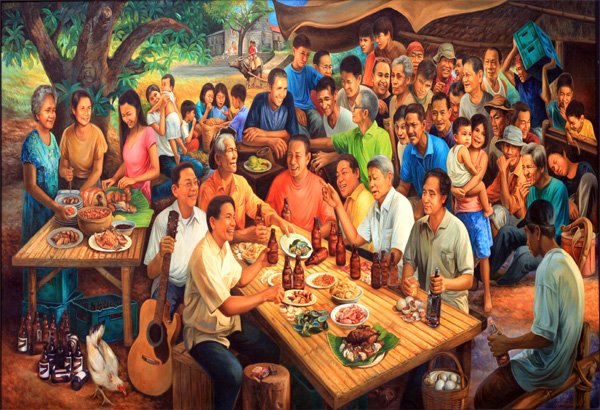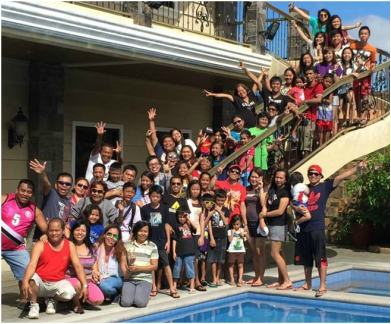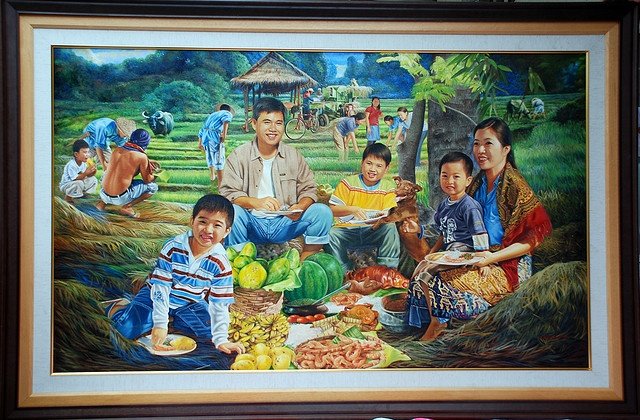Simple Explanation Of The Filipino Family System in the Philippines
Simple Explanation Of The Filipino Family System in the Philippines

Image Source
The primary unit of the Philippine's social association is the nuclear family. Among the Filipinos of the towns who make up the bigger division of the Philippine populace, and to a specific degree those of the urban ranges, the Filipino family can be graphically portrayed as making up the center or the inward hover of three concentric circles. The second one around it is made out of an extensive variety of symmetrically perceived developed two-sided family kinfolk relatives of father and mother.
The third is shaped by custom kinfolk e.g., kinfolk procured through such system as the compadrazgo or the utilization of connection signs, during the time spent extending the.family connections to incorporate companions, accomplices, businesses etc, with whom an individual from the family is associating or mean to relate all the more strongly to improve the nuclear family's advantage. On account of this third hover of families, the Filipino family system might be seen as multilateral.
A system of cooperation is accommodated by the extended family relationship structure. Be that as it may, being a relative does not really mean being a partner, in spite of the fact that the relationship gives one road to getting to be partners. Once the union has been formalized, parts and connections are pretty much characterized. It is however difficult to follow the line of specialist nor the status of the ties inside the extended hover of family in light of the fact that the focal point of expert changes with various conditions and circumstances at different ranges of time.
The expansion of kinfolk relationship past the nuclear family brings about covering connection status and parts among relatives; this mind boggling system of connection relations could include a person in snaring cooperations and irreconcilable situations and loyalties, particularly without a predominant pioneer.
Inside this expanded family relationship structure, an individual groups and separates his family as indicated by their position in the three circles of relatives: consanguineal (blood relationship), affinal (relationship through marriage), and custom (relationship in light of ceremonies) families. Superimposed on each structure connecting the person to relatives from every classification of kinfolk, is the generational example, which is characterized as far as the vertical situating of people as indicated by their request of drop.

Image Source
Acknowledgment of relatives in view of this plan for the most part covers three eras in the climbing level, while it comes to down to the fourth era in the diving request. This long line of relatives is by and large expanded by the wide degree of perceived guarantee relations stretching out to similarly as third degree cousins of both father and mother and in addition custom family. In this specific circumstance, the Filipino social structure is both vertically and on a level plane framed.
Confronted with such a variety of kinfolks, a youngster in the end figures out how to move himself among them truth be told, how to control them for his own advantage. Through this procedure, an individual figures out how to play governmental issues inside the family system, particularly with families in the second and third circles of kinfolks where the time-traverse of organization together gatherings are brief and now and again eccentric. In this manner there is by all accounts more space for innovative people to create inside the Filipino family system than in the Japanese.
Then again, as a result of the estimation of specialist, regard and correspondence, and additionally the uncertainty of the organization together system, the individual is constantly worried with the sentiments of others. At the end of the day, he needs to build up an extremely touchy social receiving wire which can screen the sentiments of individuals around him so he can be guided in his relations with each of them inside a specific circumstance and a specific snapshot of time.
This worry maybe represents the customary Filipino cordiality, which by and large awes outside guests. Makiramdam, a component which can be followed to the Filipino person's should be cherished by others, turns into the premise of the individual's confidence when satisfied. Since the essential lead is not to outrage, its first necessity, in this manner, is to be touchy to the response of others.
Very esteemed are the customary instruments in the way of life, for example, pakikisama (to coexist with), hiya (disgrace), utang na loob (to be appreciative or to shoulder an "obligation of appreciation"), delicadeza (to be wary), mapagbigay (to be liberal), makiramay (to share), pagtitiis (to continue) and pagtitimpi (to stifle). These social systems seem to have kept the Filipino from turning into a "rough maverick" and Philippine society is portrayed by settlement as opposed to showdown in the association between or among people. The huge communication designs in the two-sided connection system, in light of the nuclear family, originate from the estimations of specialist, regard and correspondence.

Image Source
While expert is a vital part of family system in different social orders, it is an esteem worried in the Filipino family system. It depends on age instead of sex. The relative libertarianism of Philippine society is established in pre-Spanish circumstances, when ladies could acquire property and prevail to the headship of the barangay. Regard is a component of the generational example in a person's association with family. What's more, correspondence, or the common give-and-take relationship, is principally a kinfolk amass issue, since related families are relied upon to help each other in times of emergency and to commonly share gifts in success.
The estimation of utang na loob and its authorize, hiya, is established in this family relationship estimation of correspondence. The idea, hiya, in Tagalog seems, by all accounts, to be apparent among individuals in for all intents and purposes the greater part of the Philippines. In the broadest sense, it is best characterized as "confidence". Hiya is by all accounts a standout amongst the most essential ideas in the Filipino social mind since it reflects the greater part of the parts of Filipino esteem and inspiration.
Paternalism, familism and personalism describe the relationship inside the nuclear family, the casing inside which a Filipino's introduction in his general public and culture is at first guided and consistently impacted. The progressively vertical structure of relationship and what numerous eyewitnesses portray as the tyranny of the leader of the family have created a specific measure of similarity, which has restricted some sort of bartering or "politicking" by individual individuals from a family for support and reward inside the family.
This has maybe been so in light of the fact that the example of generational regard in Filipino society has given basic leadership energy to the leader of the family or more established people, without a father or mother.
Some of the time the leader of the family might be a more established kin whether sibling or sister, or a relative of either guardians who can deal with the kids left parentless. In an orphan family, it is by and large the mother who goes about as the head. For, dissimilar to the Japanese, the Filipino female spouse imparts specialist to the leader of the family. The Filipino's steadfastness and compliance to the leader of the family additionally contrasts from the Japanese family in that it is individual instead of status-situated.

Image Source